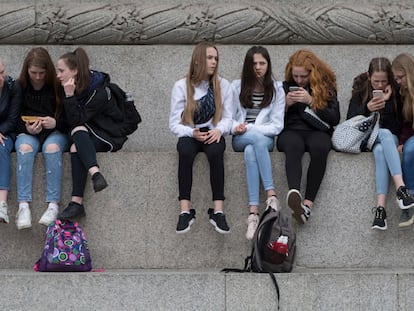Mobile archaeology: From the brick to the iPhone, these are the phones that shaped our lives
Between 1990 and 2010 the world experienced a true technological revolution. These seven devices are milestones that marked our collective, and personal, history
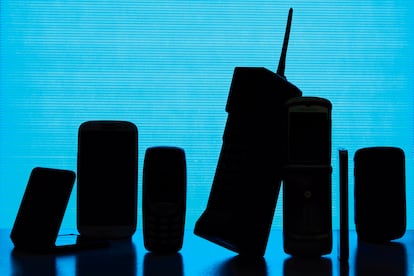
Half a century ago, on April 3, 1973, the first mobile call was made. Martin Cooper, Motorola’s vice president and chief innovation officer at the time, called Joel Engel, a researcher at Bell Labs, using a DynaTAC 8000x, the first truly mobile phone in history. Until then, mobile phones were more like portable devices that came with a carrying case; only top executives and politicians used them and they could only make, not receive, calls. The 2.5-pound DynaTAC, developed by Motorola, could be held with one hand and – after 10 hours of charging – offered up to one hour of use.
Fifty years later, those bulky devices of cell phone prehistory have been replaced by flat, shiny, sophisticated instruments that fit in your pocket and are rarely used to make calls; now we call them smartphones and they are computers, music players, GPS devices, notebooks and cameras. It is the first thing you look at when you wake up (as you probably use it as an alarm) and the last thing you see before falling asleep while scrolling through an endless Instagram feed. It even has a phobia of its own: nomophobia, the irrational fear of not having a cell phone.
“Being such an everyday thing, we are barely aware of how much it has evolved,” says Curro Quevedo Bueno, a collector and expert in mobile telephony. Of course, we do remember fondly what brand our first mobile was. Or when they started to come with color screens. Or when we discovered polyphonic ringtones. The evolutionary scale of the cell phone is part of the history of technology, but also a sentimental account of our past.
Nokia Mobira Cityman (1987). The brick
In Finland, where Nokia is headquartered, it became known as the “Gorba” because Mikhail Gorbachev, former president of the Soviet Union, used it to call Moscow from Helsinki in 1989. It was the first Nokia cell phone that came without a carrying case. It weighed about 1.7 pounds and offered technical innovations such as an illuminated screen and the ability to regulate the volume of the ringer. Due to its high price, it was mostly used by top executives. It even appeared in movies like Wall Street.
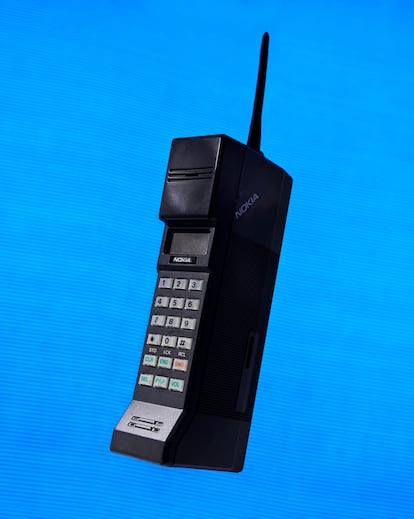
Nokia 3310 (2000). The indestructible one
At the beginning of the century, legend had it that this phone was completely unbreakable. You could drop it, get it wet, hit it repeatedly and it would keep working. It was one of the first Nokias to become available to the masses. The year it went on sale, the market was only disputed by two brands: Motorola and Nokia. Ericsson, Sony and LG tried to take a bite out of that market, but they only amounted to nibbles. The 3310 was so popular that it sold 126 million units worldwide. Its legacy came to an end with the arrival of the Nokia 1100, the best-selling cell phone in history with 250 million devices shipped (it has not yet been surpassed by any other phone). The 3310 was used for more than just calling: it had a calculator, a stopwatch and four games, including the popular Snake II. It marked a generation; in 2017, a renewed version for nostalgic people came out.
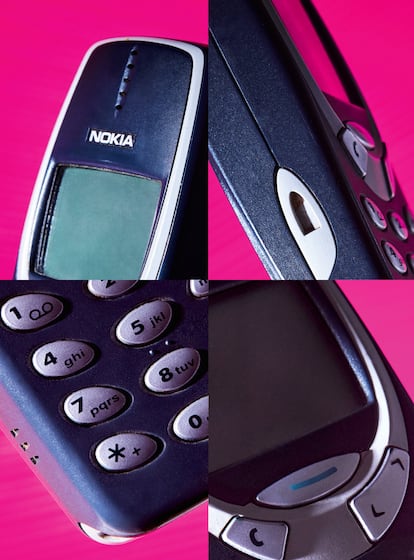
Motorola V3 (2004). The Razr
Although this kind of phone was popularly known as clamshell, the name under which it was sold was Razr (pronounced “razor”). In 2004 this aluminum Motorola was the thinnest cell phone on the market. It was so popular that it even appeared in a Beyoncé video, in the series How I Met Your Mother and in the movie The Devil Wears Prada (Miranda had one). The pink Barbie one was Paris Hilton’s favorite device.
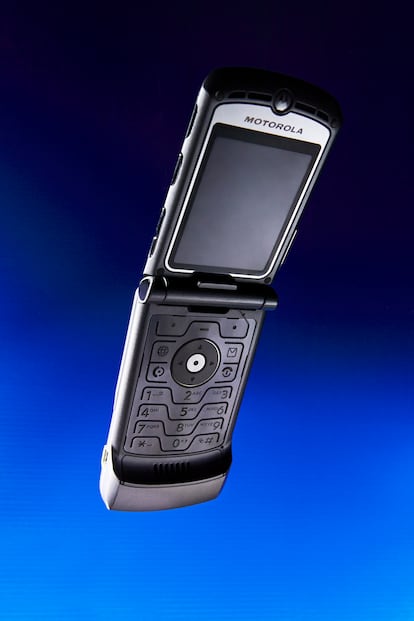
Blackberry Curve 8520 (2009). Made to write
Originally created as a high-end phone for executives and businesspeople, the BlackBerry achieved a global market share of 3% in 2011. What made the device attractive was its 35-key QWERTY keyboard. Anyone who tried it knows that no one has ever made a more comfortable cell phone for writing. Its massive use and the devotion that users felt towards their BlackBerry gave rise to a new term: CrackBerry. It was that addictive. What started as an idea for a mobile phone ended up becoming a pocket computer. Some of its most devoted users were Barack Obama, Kim Kardashian and Angela Merkel. Despite its popularity, the brand was not able to adapt to the changing times and it closed permanently on January 4, 2022.
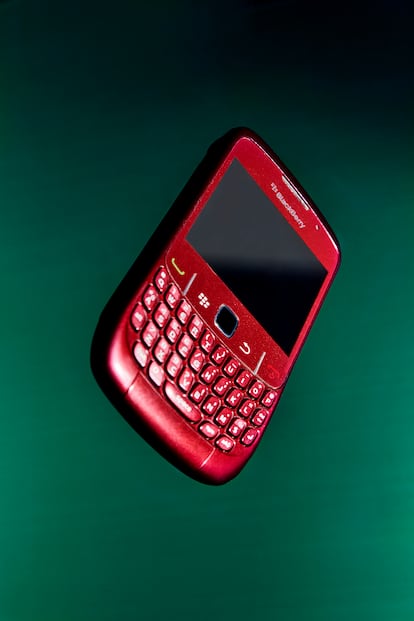
iPhone (2007). The one that changed everything
On January 9, 2007, Steve Jobs would completely change the rules of the game with the first iPhone, a revolutionary device that was all touch screen. This global phenomenon turned the cell phone into a GPS device, a camera, an MP3 player and, basically, man’s best friend.

Samsung Galaxy SIII (2012). Enter the competition
If in the 1990s the market was disputed by Nokia and Motorola, in 2012 the fight was between Apple and Samsung. You were either an Android person or an iPhone person. The answer to the iPhone had come from South Korea. The Galaxy SIII was not the first Galaxy, but it was the only one known as the “iPhone Killer.” It was the most successful Android of the time, selling 50 million units worldwide in just nine months. The touch screen was no longer Apple’s turf.

Samsung Z Flip3 (2021). The folding phone
According to Quevedo Bueno, since the launch of the iPhone and all the other smartphones, the technological revolution that we experienced in the 1980s and 1990s has come to a standstill. “Folding phones are different from the rest because they have flexible screens, something that we hadn’t seen before,” he points out. Cameras and batteries are getting better, but when it comes to innovation, we are stuck.
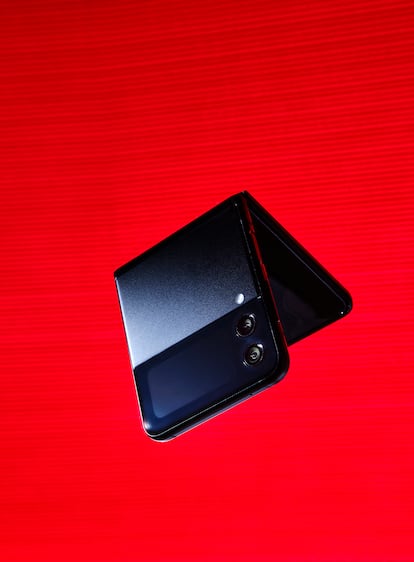
Sign up for our weekly newsletter to get more English-language news coverage from EL PAÍS USA Edition
Tu suscripción se está usando en otro dispositivo
¿Quieres añadir otro usuario a tu suscripción?
Si continúas leyendo en este dispositivo, no se podrá leer en el otro.
FlechaTu suscripción se está usando en otro dispositivo y solo puedes acceder a EL PAÍS desde un dispositivo a la vez.
Si quieres compartir tu cuenta, cambia tu suscripción a la modalidad Premium, así podrás añadir otro usuario. Cada uno accederá con su propia cuenta de email, lo que os permitirá personalizar vuestra experiencia en EL PAÍS.
¿Tienes una suscripción de empresa? Accede aquí para contratar más cuentas.
En el caso de no saber quién está usando tu cuenta, te recomendamos cambiar tu contraseña aquí.
Si decides continuar compartiendo tu cuenta, este mensaje se mostrará en tu dispositivo y en el de la otra persona que está usando tu cuenta de forma indefinida, afectando a tu experiencia de lectura. Puedes consultar aquí los términos y condiciones de la suscripción digital.
More information
Archived In
Últimas noticias
Most viewed
- Reinhard Genzel, Nobel laureate in physics: ‘One-minute videos will never give you the truth’
- Oona Chaplin: ‘I told James Cameron that I was living in a treehouse and starting a permaculture project with a friend’
- Pablo Escobar’s hippos: A serious environmental problem, 40 years on
- Why we lost the habit of sleeping in two segments and how that changed our sense of time
- Chevy Chase, the beloved comedian who was a monster off camera: ‘Not everyone hated him, just the people who’ve worked with him’


